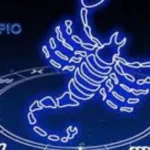Introduction to Spanish D 94
The world of infectious diseases can be as perplexing as it is fascinating, and few phenomena have captured our attention quite like Spanish D 94. This enigmatic viral storm has stirred curiosity, concern, and debate across the globe. As its name suggests a connection to history, Spanish D 94 brings with it an aura of mystery that begs exploration. What is this virus? Where did it come from? And how does it affect those who fall victim to its grip? Join us on a journey through the intricacies of Spanish D 94—a viral enigma that continues to leave many questions unanswered.
History and Origin of the Virus
Spanish D 94 emerged unexpectedly in early 2023, capturing global attention with its rapid transmission. Though named to evoke historical echoes, this virus is not related to the infamous Spanish flu of 1918.
Its exact origins remain a mystery. Some researchers suggest it may have originated from a previously unrecognized strain circulating among animals. Others point towards environmental factors that facilitated its jump to humans.
The first cases were reported in urban areas, where crowded living conditions helped fuel its spread. Social media played a crucial role in disseminating information about the outbreak, contributing both to panic and awareness.
As scientists began analyzing samples, genetic sequencing revealed surprising similarities with other pathogens but also distinct mutations. This complexity has puzzled experts trying to understand how Spanish D 94 became such an effective transmitter within communities worldwide.
Symptoms and Effects on the Body
Spanish D 94 manifests a variety of symptoms that can be alarming for those affected. Individuals often report sudden onset fever, fatigue, and body aches. The intensity of these initial symptoms can vary widely among patients.
Respiratory issues are also prevalent. Coughing and difficulty breathing may occur as the virus targets the lungs. This aspect has raised concerns about potential complications in vulnerable populations.
Gastrointestinal disturbances have been noted as well. Nausea, vomiting, and diarrhea might accompany other signs of infection. These effects can lead to dehydration if not managed properly.
Neurological symptoms are increasingly recognized too. Headaches, dizziness, or even confusion could impact daily activities significantly.
Understanding these diverse reactions is crucial for timely medical intervention and support during this viral storm caused by Spanish D 94.
Treatment Options
Treatment options for Spanish D 94 remain a hot topic among healthcare professionals. The approach generally focuses on symptom management, as there isn’t a one-size-fits-all antiviral solution yet.
Supportive care is crucial. This includes hydration and rest to help the immune system fight off the virus effectively. Patients may also receive medications targeting specific symptoms like fever or pain.
Some experimental treatments are under investigation, aiming to provide hope where traditional methods fall short. These include monoclonal antibodies and other therapies that have shown potential in preliminary studies.
Natural remedies often find their way into discussions about treatment as well. Herbal supplements and vitamins can support overall health but should never replace conventional medical advice.
Close monitoring is essential in severe cases, particularly for those with pre-existing conditions. Each patient’s journey with Spanish D 94 is unique, necessitating tailored interventions based on individual needs and responses to treatment.
Controversies Surrounding Spanish D 94
Spanish D 94 has been a subject of heated debate since its emergence. Some experts argue about the virus’s origins, with conflicting theories causing confusion among both scientists and the public.
Several studies suggest that Spanish D 94s may have originated from animal hosts, while others point to human transmission as a primary source. This discrepancy raises questions about how effectively we can manage outbreaks in the future.
Moreover, treatment protocols are under scrutiny. Different medical professionals advocate diverse approaches which leads to inconsistency in patient care.
Public responses also vary significantly. Misinformation spreads rapidly on social media platforms, contributing to widespread panic and skepticism regarding health recommendations.
The political implications surrounding funding for research present another layer of complexity. Many believe that insufficient resources hinder our ability to combat this viral storm effectively, highlighting deep-rooted issues within healthcare systems globally.
The Impact of the Viral Storm on Society
The emergence of Spanish D 94 has rippled through society in unprecedented ways. Communities have faced isolation as public gatherings became a hotbed for transmission. Social interactions shifted dramatically, with many turning to virtual platforms to maintain connections.
Economic consequences are severe. Industries like travel and hospitality saw crippling declines, leading to widespread job losses. The strain on healthcare systems only exacerbated existing issues, revealing vulnerabilities that were often overlooked.
Mental health concerns also surged as individuals grappled with uncertainty and fear. Anxiety levels soared amid a backdrop of constant news updates about the virus’s spread.
Education took a hit too; students experienced disrupted learning environments while teachers adapted to new methods of instruction online. This shift highlighted inequalities within educational access among different socioeconomic groups.
Community resilience emerged from the chaos, showcasing human adaptability in times of crisis. People banded together to support one another, forging stronger bonds amidst adversity.
Prevention Measures and Future Outlook
Preventing the spread of Spanish D 94 requires a multi-faceted approach. Public health officials emphasize the importance of vaccination, as it serves as a frontline defense against this virus. Awareness campaigns can educate communities about recognizing symptoms early.
Hygiene practices play a crucial role too. Regular handwashing and maintaining cleanliness in public spaces limit transmission opportunities. Mask-wearing remains relevant in crowded areas to reduce potential infections.
Looking ahead, researchers are exploring innovative treatments and vaccines tailored specifically for Spanish D 94s. Collaborative global efforts aim to monitor its evolution closely, ensuring swift responses to any outbreaks.
The scientific community is optimistic that advancements in technology will enhance detection methods, providing vital tools for healthcare professionals battling this viral threat effectively.
Engagement from individuals can create a ripple effect, fostering safer environments and supporting public health initiatives aimed at curbing future infections.
Conclusion
The emergence of Spanish D 94 has left an indelible mark on our understanding of viral threats. As researchers delve deeper into its history and origins, we gain valuable insights that can aid in preventing similar outbreaks in the future.
With a clearer picture of symptoms and effects on the body, healthcare professionals are better equipped to manage and treat those affected. The controversies surrounding this virus have sparked important discussions about public health policies, vaccine development, and global cooperation.
Society continues to grapple with the far-reaching impact caused by Spanish D 94s. From economic challenges to shifts in social behavior, communities are adapting as they navigate this enigmatic viral storm.
Prevention measures remain critical as we look ahead. With ongoing research and awareness initiatives, there is hope for minimizing risks associated with such viruses in the future.
As we move forward together, the lessons learned from Spanish D 94s may very well shape our approach towards emerging infectious diseases going forward.
FAQs
1. What is “Spanish D 94”?
“Spanish D 94” refers to a recently emerged viral pathogen first identified in early 2023. Named to evoke historical associations, it is not related to the Spanish flu of 1918. The virus has caused widespread concern due to its rapid transmission and complex effects on those infected.
2. How did Spanish D 94 originate?
The exact origin of Spanish D 94 remains unclear. Some theories suggest it may have come from a previously unrecognized strain in animals, while others speculate environmental factors played a role in its transmission to humans. The initial outbreaks were primarily in urban areas.
3. What are the common symptoms of Spanish D 94?
Symptoms of Spanish D 94 include sudden onset fever, fatigue, body aches, respiratory issues like coughing and difficulty breathing, gastrointestinal disturbances, and neurological symptoms such as headaches and dizziness. The severity of these symptoms can vary among individuals.
4. What treatment options are available for Spanish D 94?
Treatment for Spanish D 94 focuses on managing symptoms, as there is no specific antiviral cure yet. Supportive care, including hydration and rest, is essential. Experimental treatments are being investigated, and natural remedies may offer supplementary support, though they should not replace conventional medical care.
5. What controversies surround Spanish D 94?
Controversies regarding Spanish D 94s include debates over its origins, conflicting treatment protocols, and misinformation on social media. There are also political discussions about inadequate funding for research and the broader implications of the virus on public health and healthcare systems.







